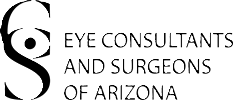Standard Cataract Surgery versus Premium Cataract Surgery Options
A cataract, also known as the “crystalline lens,” is a clouding of the eye’s natural lens. Cataracts are typically found in middle-aged to older people and can be attributed to normal aging. When a cataract becomes too cloudy, a person will no longer see clearly and cataract surgery becomes necessary. Fortunately, this is very safe and has become one of the most common surgical procedures in the United States.
If you are considering cataract surgery, please schedule an appointment with our expert surgeons today. There are several IOL (intraocular lens implants) options that you can consider even before coming in to see one of our eye surgeons. Below you will find additional information regarding Premium versus Standard Lens Implants, as well as other premium options, such as LENSAR (laser cataract surgery). Feel free to research these options more or give us a call and we would be more than happy to answer your questions or schedule you with one of our surgeons.

Lens Implants and Your Options
Here at Ophthalmic Surgeons and Physicians, we are highly specialized in cataract surgery and all of the cataract lens implant options. Our surgeons are highly skilled in cataract surgery and remain up-to-date with the most advanced premium lens implant options.
STANDARD MONOFOCAL LENS
The standard monofocal lens is an Intraocular Lens, which will provide only one, fixed distance vision without use of glasses. Normally, monofocal lenses are calculated for far vision, and for demanding intermediate and any near tasks glasses will be needed. Based on patient desire, monofocal lens might be calculated for near vision, and in this case for vision glasses will be required.
Advantages:
- Covered by most insurance companies, including Medicare.
- Good for distance vision in patients without astigmatism.
- Sometimes used for maintaining near vision in patients that are naturally near-sighted and prefer to read without reading glasses or bifocal, but need glasses for distance in this case.
Disadvantages:
- Many patients still require glasses for “perfect” distance and near vision.
- Some patients can get by with over the counter reading glasses for near vision
- If you are currently near-sighted (able to read without glasses), you will likely require readers or a bifocal for reading after cataract surgery with this standard lens option.
PREMIUM MULTIFOCAL LENS- (MULTIFOCAL TYPES OR TORIC)
A premium lens is a type of intraocular lens that can improve both your near and far vision. This IOL is also able to correct near vision, which gives you the ability to see objects in the near range of vision which diminishes with age. Presbyopia is what causes many people to befin using reading glasses in the 50’s and 60’s. The Multifocal IOL corrects vision at multiple distances. Some model of lens can reduce or eliminate astigmatism (Toric IOL’s).
Advantages:
- A premium lens can improve both your near and far vision.
- Some models of premium intraocular lenses can reduce or eliminate astigmatism (toric implants).
- Most of our patients will not need to wear prescription glasses after the procedure is completed on both eyes with these lenses, however, this is not a guarantee, as some patients may still prefer to wear glasses for clearest visual potential.
TORIC LENS
Patients who have astigmatism may require a special lens to correct their vision after cataract surgery. Cataract surgery and standard intraocular lenses (IOLS) alone cannot correct astigmatism. A Toric IOL can correct cataracts and correct for the astigmatism creating sharp vision at one range.
Advantages:
- Most of the population has some level of astigmatism. This is a warpage or irregularity of the cornea, which is the clear front window of the eye, and happens to be a powerful lens as well. Small amounts of astigmatism can be tolerated without glasses. But, for a lot of us, glasses are required to correct this component of the vision. If present, this type of lens will correct your astigmatism and provide excellent uncorrected distance vision in most cases.
- You will be independent of wearing glasses for most distance activities, such as driving and watching television in most cases.
- You will be able to wear store bought sunglasses off the rack without prescription for distance/outdoor activities.
Disadvantages:
- These lenses are not covered by private insurance companies or Medicare.
- Toric lens implants are not ideal for everyone. For example, patients with retinal diseases such as macular degeneration may not achieve full visual benefits from this type of implant and therefore may not be worth the added cost for them.
LIGHT ADJUSTABLE LENS
The RxSight™ Light Adjustable Lens is the first and only intraocular lens (IOL) that can be customized after cataract surgery. The Light Adjustable Lens is made of a special photosensitive material that can be adjusted in response to ultraviolet (UV) light. This optimization is done by your eye doctor in the weeks following lens implantation through a series of non-invasive light treatments that take only a few minutes each. You will have the unique ability to adjust and preview your vision until it meets your personal desires and lifestyle requirements. The Light Adjustable Lens delivers superior vision outcomes that non-adjustable IOLs cannot match.
